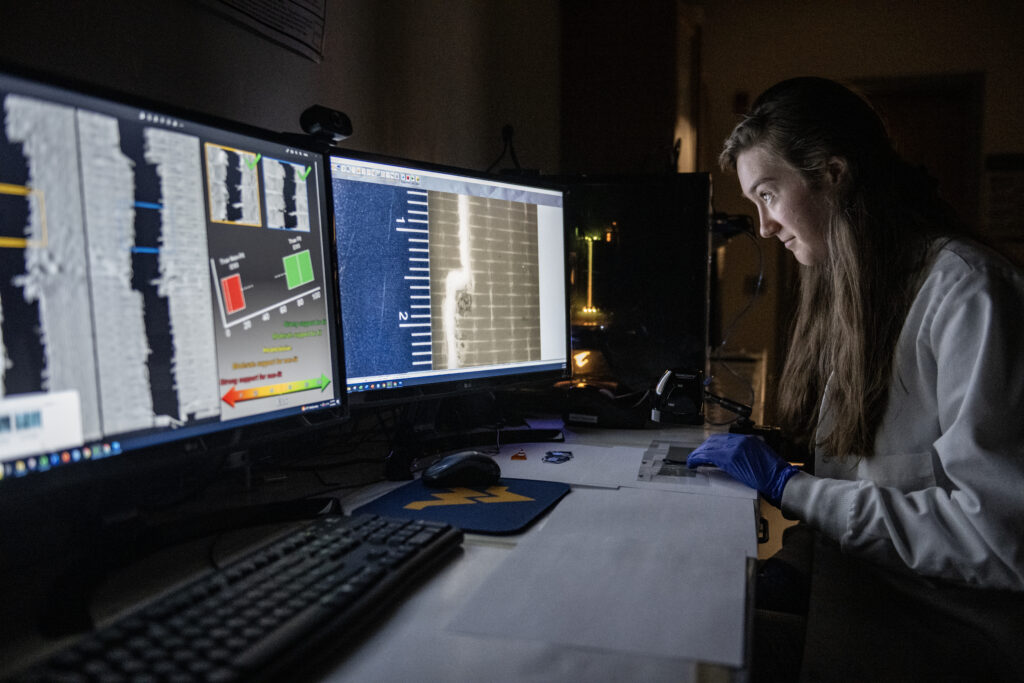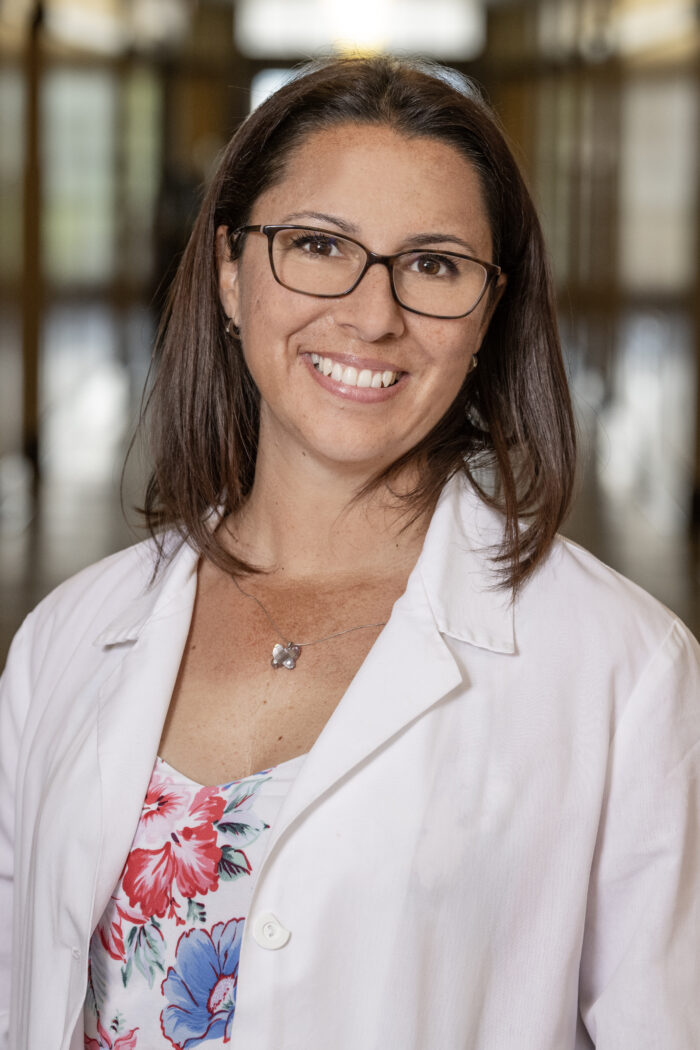In television crimes, duct tape is often used in kidnappings and murders. It turns out, it is often used in real crimes as well. Now, a group of researchers from West Virginia University has found a way to analyze duct tape and make it even stronger evidence in court.
Eric Douglas spoke with Tatiana Trejos, an associate professor at the WVU Department of Forensic and Investigative Sciences to find out more.
This interview has been lightly edited for clarity.
Douglas: We’ve all watched a movie where someone has been kidnapped and had duct tape wrapped around their face to keep them quiet. What are some of the types of evidence you’re finding on duct tape in general?
Trejos: Duct tape is one of those materials that are not only very prevalent at crime scene shows, but in real crime as well. It’s very easy to find, you just go to a store and find it. And it has properties that are very convenient, also for the criminals, to get something to kidnap and put in their mouths, gagging the victim or restraining the victim. We unfortunately have this kind of evidence in many cases like kidnapping, murders, even suicides. Also, to produce improvised explosive devices. It’s very common that they use duct tape to hold different components as well as other types of tape like electrical tapes. When we have drug trafficking as well, it’s very common that they package those kilos with duct tape around to maintain the water or other environmental sources. Many different scenarios in which we can go to a crime scene site and find duct tape in many circumstances. So it becomes very viable for many reasons.
The tape itself, the physical and chemical properties of the tape, can provide a lot of information for the investigative leads. We can do very rapid physical examinations of the tape that changes depending on manufacturing source as well, manufacturing plants where this has been built, brands, they have their own formulations, chemical compositions, as well as physical features, even levels of quality. Just by the physical quality in the chemical formulation, we can tell a lot and provide lead information early on in the investigation about potential manufacturing sources that can lead to potential places where we can have areas that people purchased, and so on, and so forth.
Douglas: For this particular paper that you’ve published, you’re literally taking the edges of where duct tape is made to be ripped apart.
Trejos: Yes, that’s what makes the tape very strong. It has the adhesive that makes it sticky and it has the backing, which is the top surface, usually silver, but there are many other colors and in between is a mesh. Like you said it’s a fiber, a textile that has different fibers going in one direction and across. And the more fibers we have, the stronger that tape is. So that also has to do with the properties.
Douglas: You’ve been able to quantify when duct tape is ripped apart, the leading edges of the piece that was removed and the pieces still on the roll, you can yconnect those and and you’ve proven that that can’t be replicated. I mean, this is DNA-fingerprint kind of stuff.
Trejos: Exactly. So what we have known for many years is physical features, which is that alignment of two pieces that were once joined together, has a very high probative value in the courtroom, because it’s very likely that two pieces will fit together, just like a puzzle piece. When you rip it apart, whether it’s cut or torn by hand, there will be features that are distorting one edge and the other and they fit together. And the more those features and more individualizing those features, then the more your confidence in that those two pieces were once together.
When you have very high quality physical features, then what we have demonstrated is the assumption that our forensic examiners have had for years, because forensic physical theories have been out there for many decades. You have the two pieces fit together, it’s self explanatory and very easy also, to demonstrate in the court. We don’t need very hard science to demonstrate that the two pieces come together.
Douglas: This is still microscopic level though, right?
Trejos: It’s two stages. You need first to do a macro level, and then you go down to the microscopic level to demonstrate those features. The big assumption is that it’s unlikely that two pieces will fit together if they were not once together. However, just like many years ago in fingerprinting we had the assumption that no other fingerprint matches other individuals.
That’s where this project started. I’ve worked very closely with practitioners and laboratory managers to identify research that can help them to provide solutions to their needs. And one of them was a need to demonstrate that assumption can be proven scientifically.
Douglas: You mentioned something a moment ago, you said whether it’s cut or ripped apart. So even if it’s cut with a knife or scissors, you can still match up the leading edges microscopically, and prove that those two were together.
Trejos: There was also an assumption in our discipline, before we started doing the research, that if the cut is straight, there might not be many features. So there was a leading assumption that cut edges will be less informative and less probative. We demonstrated with experiments that that was not the case, even with cutting there are more angles, it’s more defects that can be built in the edges or will leave some impressions and defects that are very difficult to reproduce.
Douglas: Has this been substantiated in a court of law yet? Has this gone to court and been proven or been accepted?
Trejos: The physical examination is commonly accepted in the courtroom. But we are going a step ahead. Just like fingerprints, it’s been out there for many years. But we wanted to have the highest standards of science or the evidence that will present it. And this is where this comes along.
One of the advantages of this examination is that it’s very quick to do. I can provide lead information that can help a lot of investigations. It is not as costly as all this evidence that we collect, because we need a microscope, the brain and the human expert.
Douglas: Is there anything we haven’t talked about?
Trejos: The big message is that we really wanted to improve the objectivity and standardize how these examinations are done across different forensic units. Because one of the problems that we had till now is that there are no standard test methods. It seems to be so intuitive, that if I find features that I as an expert consider to be individualizing and calling this a fit, then I provide my judgment in my opinion in the courtroom and defend that, but what we wanted to make sure is that we are able to develop a method that is standardized, that we can create consensus based protocols.
No matter if I do the analysis in our laboratory here in West Virginia or somewhere else in the country or in the world, I will follow the same protocol. And I will be able to demonstrate that in the courtroom.
From the thousands of samples that we have analyzed in different qualities of tapes, different examiners, we didn’t have a single example in which we call it a false positive. In other words, we’re saying this is true period. When we really know from the ground truth that this was not joined together. So this is good news.





















